The violet color stands out in nature and art because of its incredible beauty. It derives its name from the violet flower, which is the same color. And artists love it due to its mysterious visual effect.
But what colors make violet? If you want to enrich your art with the charm of the violet flower, knowing how to mix the color is crucial.
Violet is the color at one end of the visible light spectrum where short wavelengths are located.
It sits between blue (visible to the eye) and ultraviolet light (invisible to the eye), making it the last color on the visible spectrum’s short wavelength end.
What Colors Make Violet?
The colors that make violet are magenta and blue. Magenta is a cool shade of red color, so some texts refer to the two colors that make violet as red and blue.
However, just knowing that red and blue colors make violet is not sufficient when mixing the color.
The specific shade of the colors used to make your violet color will invariably influence the outcome.
For instance, you may notice that the resultant violet looks muddy when you mix blue with red instead of magenta.
But how do we create magenta? Red and purple combination make magenta.
When using watercolor or acrylic paints, I mix magenta with ultramarine blue or phthalo blue to get a saturated shade of violet.
This vibrant shade of violet does an excellent job when painting, as it retains the color more effectively.
That said, adding in a bit of white goes a long way in making the violet color look truer. The white tint helps adjust the value of the violet color.
Violet Color Code: A Detailed Breakdown

The hex code for the color violet is #8F00FF. It has an RGB decimal of (143, 0, 255).
In this RGB color space that uses three colored lights (red, green, and blue), hex #8F00FF comprises 56.1% red, 0% green, and 100% blue.
The RGB is the color model used in television and computer screens. This mixing model produces pure violet color by mixing red, blue, and no green light. The mixture consists of bluer than red color.
Printers, on the other hand, use the CMYK color codes. In this CMYK color space or process color, hex #8F00FF (violet) comprises 44% cyan, 100% magenta, 0% yellow, and 0% black.
The violet color has a 273.6-degree hue angle, 100% saturation, and 50% lightness.
If you are a painter, you will be inevitably interested in the RYB value of the violet color. The RYB color model is the one historically used by painters.
In this space that uses three colors red, yellow, and blue lights, violet is created with a mix of red and blue pigments.
The resultant spectral color falls between blue and purple on the color wheel.
What Two Colors Make Violet?
The two colors that make violet are blue and red. Except when making violet out of these two colors, the specific shade chosen will determine the actual shade of the resultant violet.
A combination of magenta and ultramarine blue should give a bright, radiant shade of blue, which is ideal for painting.
If you want to increase the value of the color, you can add a tinge of white little by little until you are happy with the hue.
In any case, you should notice that violet is a warm shade of blue. So scientists often recommend making it by combining cyan with magenta.
However, mixing cyan with magenta creates a more blue color than violet.
Violet has many red undertones, so I wouldn’t recommend making it from a combination of cyan and magenta.
Instead, I swap the cyan for ultramarine blue for a vibrant shade of violet.
This only underscores how much your chosen shade of blue and red affect the outcome.
How to make violet
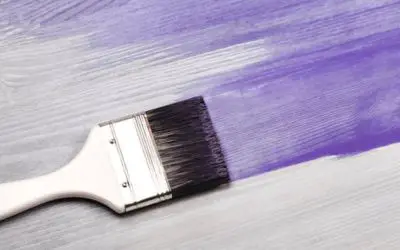
Now that you know what two colors make violet, it’s time to mix one.
Violet has no tint; it is best to select pigments (red, blue, and white) with no yellow or green undertones to create violet with truer value.
The amount of each color (blue, red, and white) in the mixture will directly determine the violet shade you get.
A lot of red pigment will create a violet with reddish undertones.
Similarly, the more blue pigment in your mixture, the more bluish violet will appear.
White is optional. You can leave it out if you are happy with the color you get from the combination of red and blue.
However, you can add white to adjust the value and neutralize the color to make your violet flawless.
Here is what to remember when deciding your target shade of violet.
- Creating violet for digital purposes: Follow the RGB color model. In this color mixing model, red and blue light produce violet. The violet has a blue bias, with a greater percentage of blue than red.
- Mixing violet for acrylic painting projects: Follow the RYB color model traditionally used by painters. Create violet by combining cool red and blue pigments with a purple bias.
- Creating violet for print media: Follow the CMYK color model and create violet by combining magenta with cyan pigments. Ensure the combination has more magenta than cyan to create a perfect shade of violet.
In any of these scenarios, using the right shade of blue and red when mixing violet or purple colors will determine the quality of your outcomes.
The wrong choice of red or blue can easily result in a muddy violet color.
Consider each pigment’s color bias or undertones when mixing a saturated, vibrant violet color.
The idea is to identify the undertones to avoid introducing complementary colors into your mix, as any traces of complementary colors will create a muted violet color.
For instance, my preferred blue shade for making violet, ultramarine blue, has a noticeable red bias which is good for the mixture.
However, avoid colors like teal blues or cadmium reds with yellow undertones.
Yellow complements violet, so introducing it into the combination will result in a muted or muddy violet color.
What Colors Make Blue-Violet?
The colors that make blue-violet are purple and blue. Blue-violet is a shade of blue with the hex code #8A2BE2. It is a strong shade of violet with a muted look.
When making blue-violet, you can create purple by combining blue and red. Once you have your purple, mix it with blue to create blue-violet.
The secret to getting the correct blue-violet color is to have more blue pigment in the mixture. When done correctly, the color should resemble that of the blue-violet flower.
How to make blue-violet
The most straightforward way to make blue violet is to mix blue with purple pigments until you are happy with the color.
If you have only the primary colors, you may start by creating purple from a combination of red and blue in equal parts.
Once you have your purple paint, the next step is to mix it with blue.
The resulting blue-violet paint will have an unmistakable blue bias, with more blue pigment than the other constituent colors.
Alternatively, you can make blue-violet color from a mixture of quinacridone magenta and can ultramarine blue.
Since you need a significant blue bias in blue-violet, add more ultramarine blue pigment than magenta to get the correct shade.
Mixing one-part magenta with three-part ultramarine blue creates just the right blue-violet shade.
When mixing violet, you can add a bit of white to neutralize any bright hues you find unappealing in the resulting color.
How to Make Red Violet
Red violet is violet with stronger undertones of magenta. It has a red bias, with a #C71585 hex code.
You can make this color by mixing red and blue pigments but adding greater amounts of red when creating the combination.
Ideally, I go for three-part red with one-part blue to make the color biased toward magenta.
Still, you can add more red pigment if you are unhappy with the color after combining one part blue with three-part red.
However, if you want it darker, add some black pigment to give it a deeper shade.
But if you prefer lighter red-violet color, add some white pigment to lighten it according to your taste or preference.
Adding black or white to the combination of red and blue should adjust the color’s value to the desired shade.
What Colors Make Purple?
To create the color purple, you need to mix red and blue. A good way to do this is by starting with a small amount of blue, and gradually adding more as you mix, until you achieve the shade of purple you desire.
Purple is biased toward red, so it will invariably have more red pigment than blue to achieve its true shade.
Once ready, purple will have more red hues than blue. This is why it helps to start with little blue and add it gradually until you are happy with the color.
The final shade of purple should be a saturated, reddish combination of red and blue pigments.
This sets apart purple from violet, which has a blue bias. So the latter contains more blue pigments than red.
Purple Vs. Violet

Purple and violet are two closely associated colors. They both refer to the variety of colors between red and blue in hue.
Purple vs violet; Are they the same? Read along to learn how purple and violet colors differ.
- Purple is biased toward magenta, while violet has a blue bias
Purple is a saturated, reddish mixture of blue and red, while violet is a de-saturated, bluish mixture of red and blue.
So, while both colors contain red and blue in their makeup, adding more red pigments will result in purple, while a greater amount of blue pigment will result in violet.
Due to its blue bias, violet sits closer to blue in the traditional painters’ color wheel, while purple is placed toward red.
- Violet is a spectral color, while purple is non-spectral
Spectral colors are the colors of a single wavelength of light or a narrow range of wavelengths in the visible spectrum.
Violet is one such color on the short wavelength of the visible light spectrum.
It corresponds to the band of single wavelengths of light between 380 and 450 nanometers in the visible light spectrum.
On the other hand, purple is the color of many blue and red light combinations.
The human eye perceives some of these combinations and violet and the same.
Another example of a non-spectral color is magenta, which we can see but is not among the colors on the visible light spectrum.
This means that violet and other spectral colors are true wavelengths. On the other hand, non-spectral colors like purple and magenta are shades that the brain creates.
For instance, the brain will make purple when we see red and blue simultaneously.
We can only see these non-spectral colors when we mix two colors, whereas spectral colors like violet are pure, standalone colors.
Read also: what does gold and silver make?
Mixing Violet With Different Mediums
Whether a professional artist or DIY enthusiast, you could use the knowledge of colors that make violet in various mediums.
Some common mediums are acrylic, watercolor, gouache, and more.
All these art mediums tend to apply the same mixing techniques, albeit with minor variations.
Here is a look at how you can mix violet with different mediums.
1. How to make violet color with acrylic paint
When using acrylic paint, make violet by mixing quinacridone acrylic paint and ultramarine blue and paint in a 2: 1 ratio.
Mixing two parts quinacridone acrylic paint and one part ultramarine blue paint should create a rich, bright-colored acrylic mix.
While you can work with it as it is, the color will look better with a bit of white added.
So add a hint of titanium white acrylic paint to adjust the value, giving it a slightly lighter shade.
All acrylic paint products should be artist-grade to guarantee the best results.
2. How to make violet color with watercolors
Mixing violet with watercolors is precisely like using acrylic paints. Combine two parts quinacridone magenta and one part ultramarine blue and thin the resulting mixture with water.
Once done, the magenta and blue watercolors should be replaced with a bright violet watercolor.
How Do You Make Light Violet Color?
Like many colors, you can add a hint of white to your violet color to lighten it or black to deepen the color.
In this case, mix magenta and ultramarine blue, as discussed, to create violet.
Then add some titanium white pigment to adjust the value, making the color lighter.
Violet Color Vs. Indigo Color
What is the difference between indigo and violet? Let’s find out.
Both violet and indigo are real spectral colors in the visible light spectrum. However, they are not identical despite their close similarities.
Indigo is a color corresponding to a band of single wavelengths between 440-460 nanometers.
On the other hand, violet is a spectral color whose frequency comprises wavelengths from 400 to 440 nanometers.
Violet is the last visible color of the light spectrum. It is a vivid blue-purple color whose hex code is #8F00FF.
Indigo is the color immediately next to violet in the visible light spectrum. It is halfway between blue and violet, with the hex code #4B0082. But is indigo a shade of blue? Dig up.
Both colors look very similar to the naked eye, and one can easily be mistaken for the other. For instance, cobalt violet and indigo look almost identical to the naked eye. (Here is a detailed guide on how to make indigo color).
Related posts:
FAQs
Does blue and purple make violet?
Yes. Mixing blue and purple make a shade of violet called blue-violet. This shade resembles the blue-violet flower in hue, shade, and beauty.
What colors make purple color?
The colors that make purple are blue and red. The purple color is biased toward magenta, so it tends to have more red undertones than blue, and the amount and shade of each constituent color determines the final look.
What colors make violet purple
Red and blue colors make violet purple. However, you can also make violet purple color by mixing purple and violet pigments, slightly canceling out the violet and purple undertones and ending up with something in between.
How to make violet with primary colors
Mix magenta and cyan in equal parts to make violet with primary colors. Magenta and cyan are otherwise called primary red and primary blue, respectively, which is why red and blue are the colors known to make violet.
What secondary colors make violet?
The secondary colors that make violet are red and blue. You can combine red and blue pigments in a ratio of 2: 1 to make bright violet. If you don’t like the brightness of the color, you can adjust its value by adding a bit of white.
What Colors Make Violet: Parting Shot
Knowing what colors make violet can enable you to create this magnificent and pure color with acrylic paint, watercolors, and more.
This article provides various ways to make various shades of violet suitable for various projects.
Whether you are an acrylic artist or digital creator, this guide should help point you in the right direction.
Mixing the right shade of blue and magenta allows you to create bright and stunning shades of violet and capture its stunning beauty in any space.
We hope this guide helps you out. We will be happy to hear your thoughts in the comments.
Read also: How to make a peach color


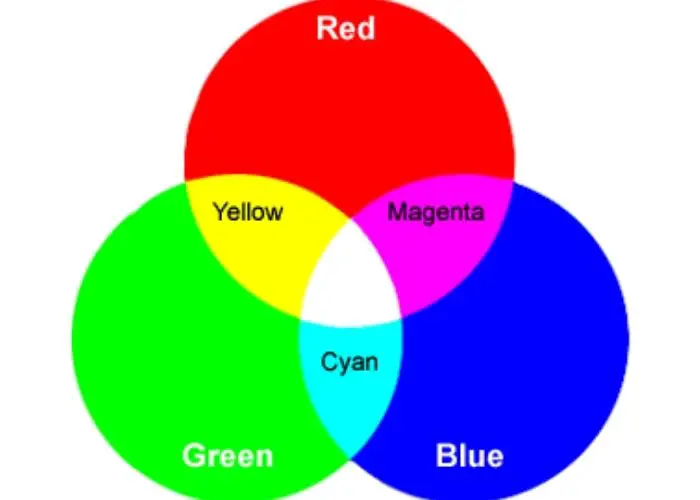
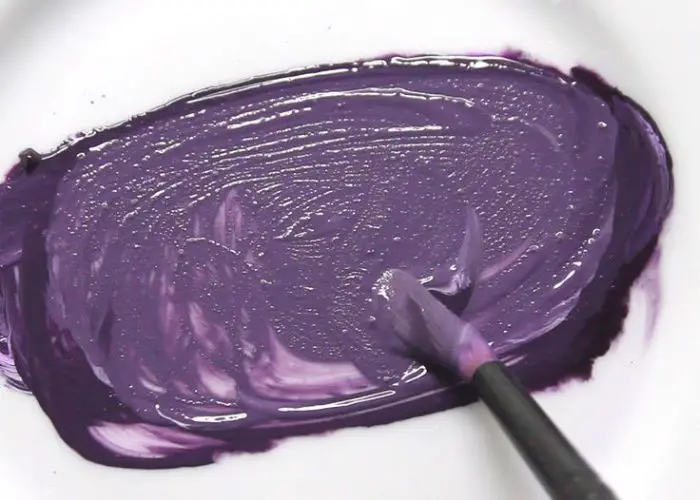
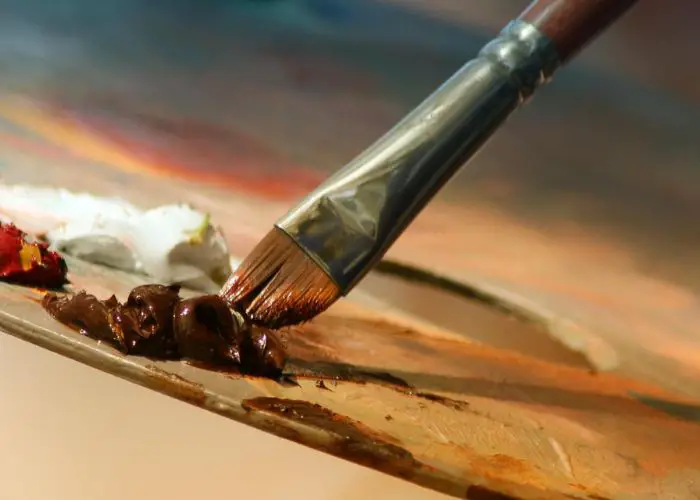
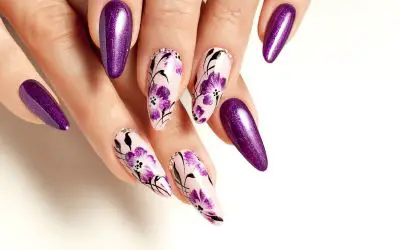



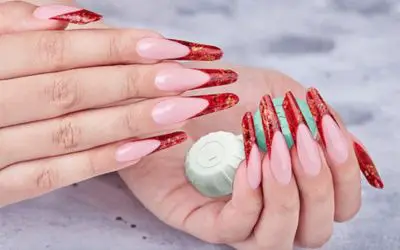
Leave a Reply